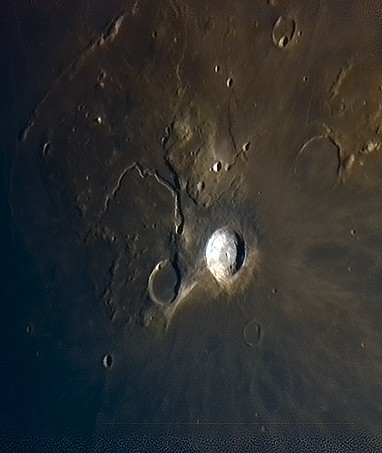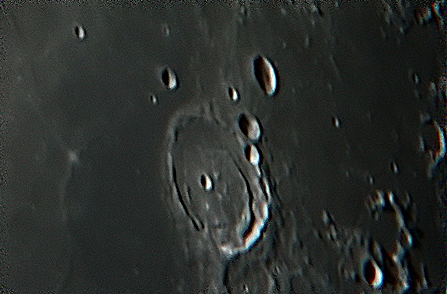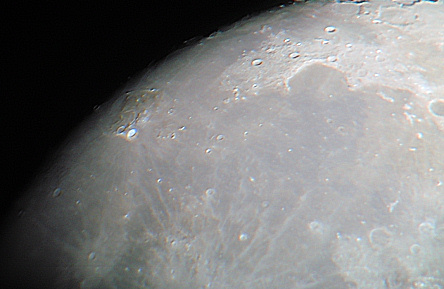Aristarchus crater (Moon) with Meade Lightbridge 16 inch:
Aristarchus is a large impact crater on the Moon, is in the northwest of the nearside of the Moon. It is considered the brightest of the large formations on the lunar surface, its albedo is nearly double that of most other geographical spots. The crater is bright enough to be visible to the naked eye and is stunning when viewed through a large telescope. It is also easy to identify when most of the lunar surface is illuminated by reflection of light on Earth.
The crater is located on the southeast edge of the Aristarchus Plateau, an area that contains several high volcanic features, such as wrinkling rimes. This area is known for it have been detected in a significant number of transient lunar phenomena of nature as well as by recent emissions gas radon to be measured by the spacecraft Lunar Prospector.






